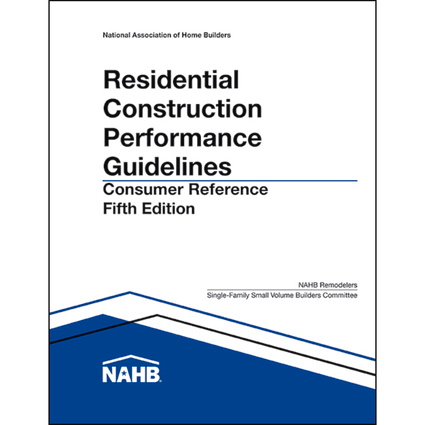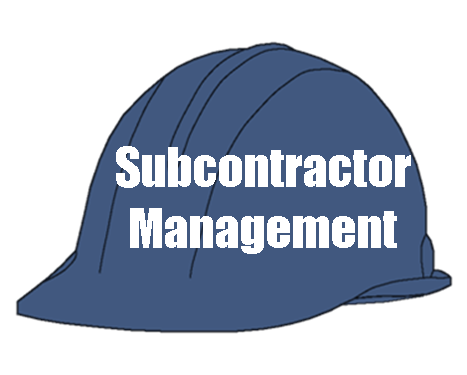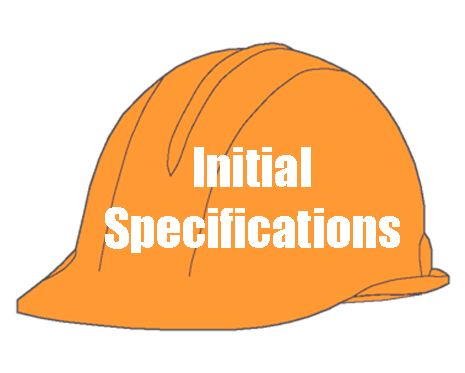CLIENT MANAGEMENT and PROJECT MANAGEMENT
Get the National Association of Home Builders (NAHB) In Your Corner
You will always attempt to provide your client with the best
possible value for their money.
You will always follow best practices consistent with the level of construction you are providing.
|
You will always ensure that your subcontractors are following the Scopes of Work you have laid out for your projects. (See Subcontractor Management Package information). |
But how do you make sure your client understands the construction process and the mutual responsibilities of each of the parties to the agreement -
the Buyer (them) and the Seller (you)?

The National Association of Home Builders (NAHB) has
published a very useful booklet you can use in defining your relationship with
your clients. It applies to new
construction and to remodeling.
You can review a .pdf of the 5th version of the booklet here.
To get the maximum in benefit from the use of these booklets, I recommend that you purchase copies from the NAHB and distribute these as part of your contracting process. The fact that the information is from a third party as well-known as the NAHB establishes more authority for the document.
You can purchase the latest edition of the "Guidelines" from the NAHB here.
The guides are sold in packs of 10 and cost about $7.00 each. Well worth the expense if there's an issue (and there always is).
How to Use this Valuable Booklet
Use the information in this booklet to control your client's expectations and reduce unreasonable demands. The booklet provides the opinion of a widely accepted third-party on acceptable performance benchmarks in the construction process.
You can use this booklet in the following manner --
Provide a copy of the booklet to the Client, as part of your contract package, to help them understand the construction process. Refer to the NAHB booklet in your contract by stating that you will be using it to determine if you have met performance benchmarks. Of course, you will check with your legal counsel regarding legal terminology, but wording in the contract and/or warranty might include:
"At a minimum, all workmanship shall conform to the guidelines found in the publication Residential Construction Performance Guidelines for Professional Builders and Remodelers, Edition [cite Edition you are providing], National Association of Home Builders, 20XX [cite publication year of version you are providing]. If an item is not covered in that publication, standard industry practice shall govern. This may include the dispute resolution process as specified in the contract documents or by applicable laws."
Other ways to use the booklet:
- Avoid disputes by referencing an objective set of guidelines with third-party credibility.
- Make the guidelines available to mediators, arbitrators, and judges to help them understand the acceptable performance criteria.
- Make the guidelines available to building code officials so they can distinguish them from code compliance issues.
- Make the guidelines available to trade contractors.
- Make the guidelines available to city, county, regional, state building officials.
- Make the guidelines available to third-party inspectors.
Here Is What Is In The NAHB Booklet --
Topics Covered
This booklet is the authoritative source on performance standards. More than 300 building companies and in excess of 20 Building Products Associations have contributed and/or reviewed the information in the booklet.
The booklet is comprised of twelve divisions, covering the chronological construction process. The divisions include:
|
|
|
Guidelines
The format of the booklet is straightforward and direct. The authors provide guidelines for more than 280 potential confrontational interfaces. Each guideline consists of:
|
Observation: a description of the particular construction condition. Performance Guidelines: The specific criterion for acceptable workmanship. Corrective Measure: A description of the work required by the contractor to meet the performance guideline and/or the consumer's maintenance responsibility. Discussion: (Optional) An explanation of unique factors pertinent to the condition. |
Samples
Here are three sample sections:
Floor System
3-1-1 Observation: Springiness, bounce, shaking, or visible sag is present in the floor system.
Performance Guideline: All beams, joists, headers and other structural members shall be sized according to the manufacturer's specifications or local building codes.
Corrective Measure: The contractor will reinforce or modify, as necessary, any member of the floor system not meeting the performance guideline.
Discussion: Deflection may indicate insufficient stiffness in the lumber, or may reflect an aesthetic consideration independent of the strength and safety requirements of the lumber. Structural members are required to meet standards for both stiffness and strength. When a consumer's preference is made known before construction, the contractor and consumer may agree upon a higher standard.
Humidity Control and Condensation
8-2-1 Observation: Water, Ice or Frost is observed on a window.
Performance Guideline: Windows will be installed in accordance with the manufacturer's instructions and applicable building code.
Corrective Measure: No action is required of the contractor unless the water, ice, or frost is directly attributed to faulty installation (i.e., that deviates from the manufacturer's instructions and/or applicable building code).
Discussion: Condensation usually results from conditions beyond the contractor's control. Moisture in the air can condense into water and collect on cold surfaces, particularly in the winter months when the outside temperature is low. Blinds and drapes can prevent air within the building envelope from moving across the cold surface and picking up the moisture. Occasional condensation (water) in the kitchen, bath, or laundry area is common. It is the consumer's responsibility to maintain proper humidity by properly operating heating and cooling systems and allowing moving air within the home to flow over the interior surfaces of the windows.
Interior Doors
9-1-4 Observation: A wooden door panel has shrunk or split.
Performance Guideline: Wooden door panels shall not split to the point that light is visible through the door.
Corrective Measure: One time only, the contractor will fill splits in the door panel with wood filler and will match the paint or stain as closely as practical.
Here Is Why You Must Use This Document
You will always do your best to provide a positive experience for your client.
It just makes sense to protect your reputation and your business brand to the best of your ability.
However, if the time ever comes when you are sitting at the table with the arbitrator, or in the courtroom with a judge, explaining performance metrics will be much easier if you have this booklet referenced in your client agreements and on hand for all parties to scrutinize.


















